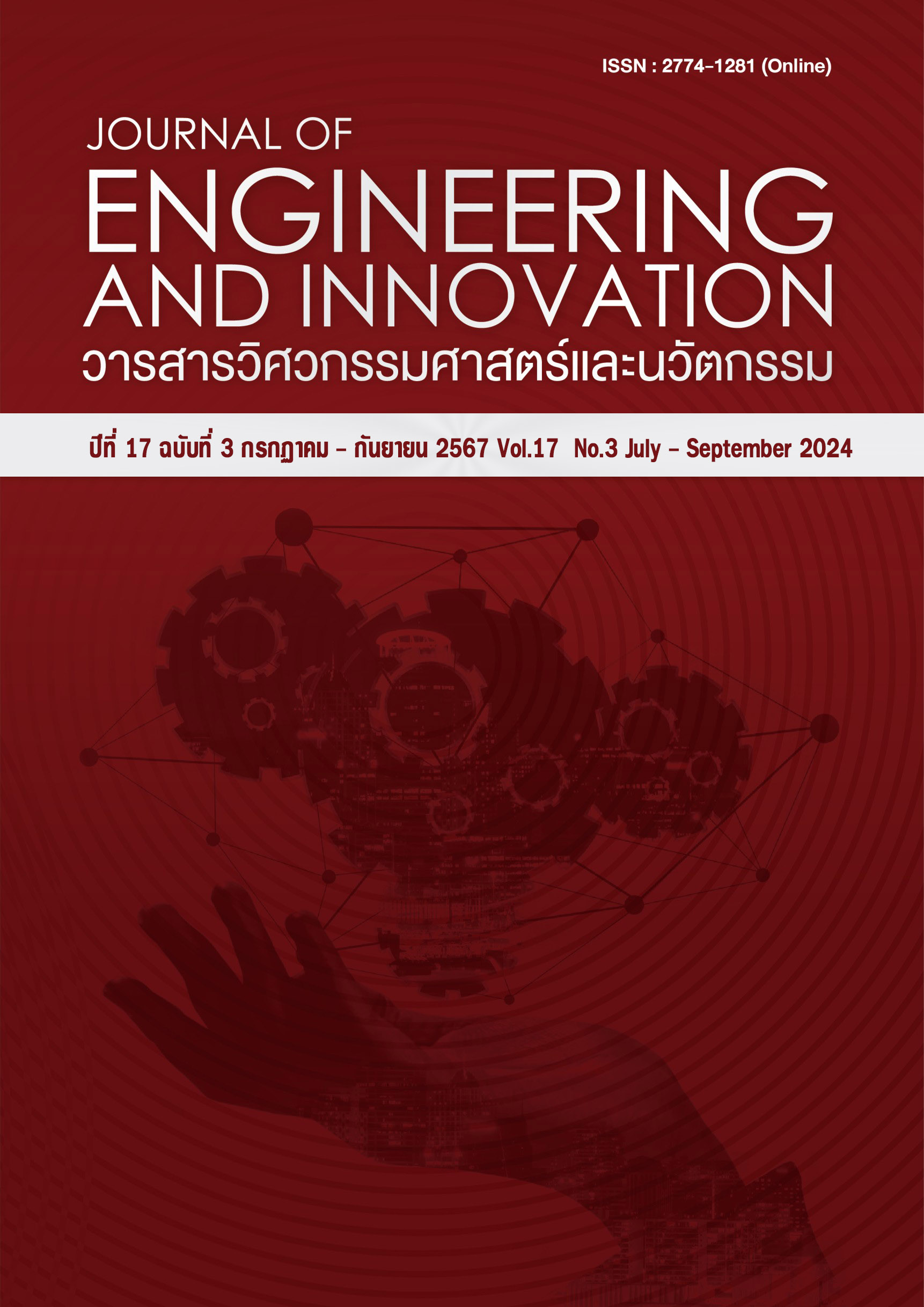Investigation on fatigue fracture of turbocharger shaft in diesel engine
Main Article Content
Abstract
The purpose of this research is to determine the cause of the failure of the turbocharger shaft in a diesel engine that has been in use for 100,000 Km. The turbocharger shaft is made from AISI 4140 hardened medium alloyed steel. The experiment has been determined in many ways; Visual inspection of the crack surface and scanning electron microscopy (SEM), microstructural analysis of materials with an optical emission spectrometer and optical microscopy (OM), mechanical properties testing with a hardness tester. The summary result of fracture surface of this turbocharger shaft was cause by fatigue and that fatigue was the dominant mechanism of turbocharger shaft failure due to obvious beach marks and fatigue striations which these results indicate that the fracture mode of the outer surface is brittle fracture. The central region of the crack of the shaft was found to be dimples, this type of crack is an indicator of shear failure in the ductile fracture mode. An abnormality was found in the results of the hardness test at the crack area. The surface hardness value was 334 HV and the maximum hardness value at the core of the shaft was 365 HV. In general, the surface hardness value of the shaft must be equal greater than the central axis of the shaft. Finally, microscopic examination reveals that the microstructure of the turbocharger shaft surface consisted of a layer of martensite that was formed by extrusion.
Article Details
References
Xu X., Yu Z. Failure analysis of a locomotive turbocharger main shaft. Engineering Failure Analysis. 2009;16(1): p. 495-502.
Sivaprasad S., Narasaiah N., Das S. K., Das G., Tarafder S., Gupta K K., Ghosh R. N. Investigation on the failure of air compressor. Engineering Failure Analysis. 2010;(17): p. 150-157.
Swati B., MD G., Jivan K., VN S. K. Failure Analysis of a Compressor Blade of Gas Turbine Engine. 1st International Conference on Structural Integrity. 2014;(86): p. 933-939.
Thiago F. A., Raphael C. C., Paulo R. T. S., Abraao S. S., Sandro G. Analysis of turbo impeller rotor failure. Engineering Failure Analysis. 2016;(63): p. 12-20.
Mohommed N. Q., Sumit S. K., Baloni B. D., Channiwala S.A. Failure Analysis of Turbocharger. 4th International Conference on Multidisciplinary Research & Practice. 2017: p. 214–219.
Sajjad S., Ahmad M. P., Mojtaba K. A high-cycle fatigue failure analysis for the turbocharger shaft of BELAZ 75131 mining dump truck. Engineering Failure Analysis. 2020;(116):104752.
Rodrigo S. M., Clarissa C., Noé C., Adilto P. A. C. Fatigue Failure Analysis of a Speed Reduction Shaft. Materials. 2021;(11):856.
Hao G., Haitao D., Jianzhong L., Dongfeng W., Sanming D., Yongzhen Z., Zongye D. Failure analysis of automobile engine pump shaft bearing. Advances in Mechanical Engineering. 2021;4(13): p. 1-9.
Mojtaba E., Maryam D., Seyedeh M. A., Ahmad A., Rouhollah F., Mohsen R., Hasan B., Farhad G., Amir S., Mohsen S. Fracture Analysis of Compressor Impellers in Olefin Units: Numerical and Metallurgical Approach. Advances in Materials Science and Engineering. 2022;(2022): p. 1-16.
Thiago F. A., Weslley R. V. S., Eduardo C. B. C., Gustavo D. L., Wisnner F. S. S., Simone S. Failure analysis of a sugarcane loader rear shaft. Engineering Failure Analysis. 2019;(109):104326.
AZO MATRIALS. AISI 4140 Alloy Steel (UNS G41400). Available from: https://www.azom.com/article.aspx?ArticleID=6769 [Accessed from 11th Mar 2023]

